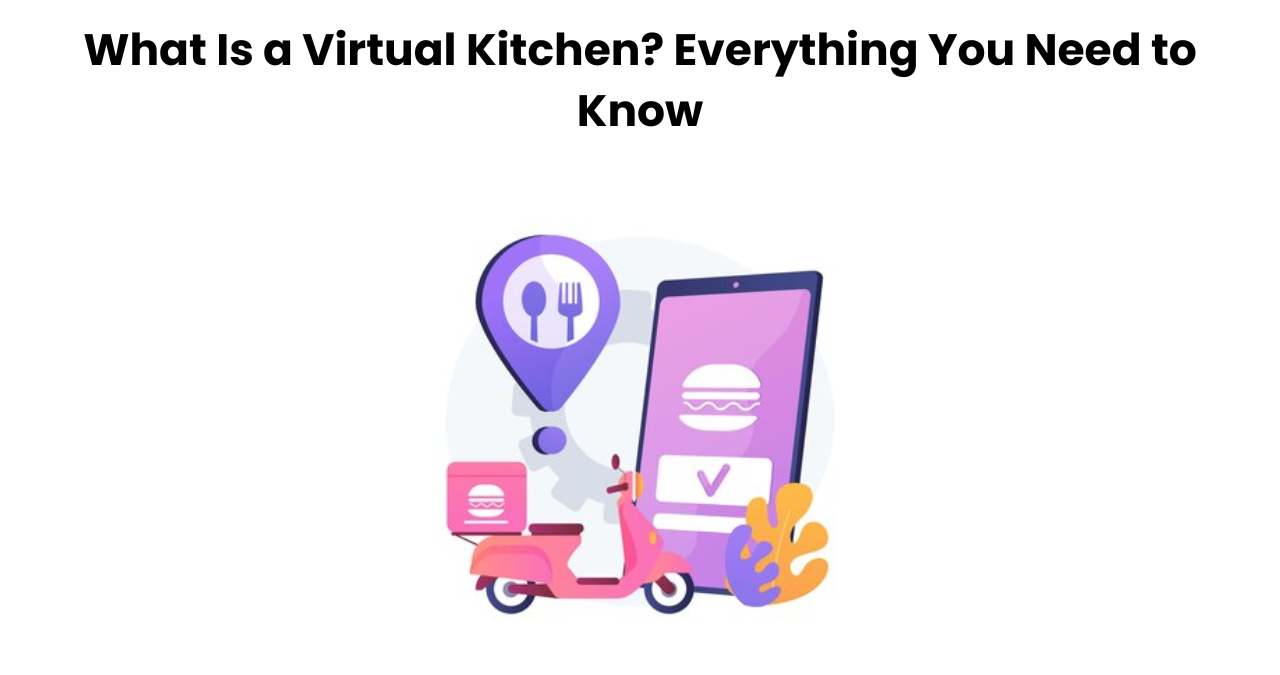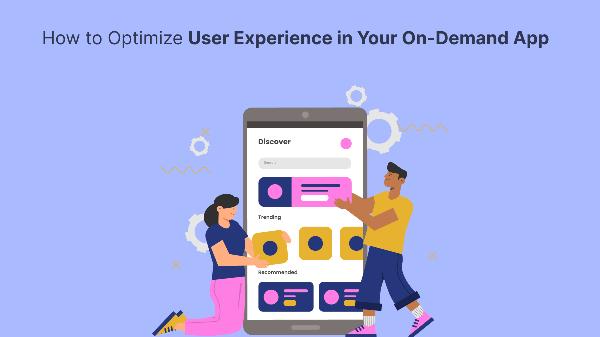What Is a Virtual Kitchen? Everything You Need to Know

Strong 8k brings an ultra-HD IPTV experience to your living room and your pocket.
In today’s fast-moving world where convenience is everything, the way we eat and order food has gone through a massive transformation. One of the key players in this shift is the rise of virtual kitchens. These new-age kitchen setups are changing how food businesses operate, how people experience food delivery, and how entrepreneurs launch food brands.
If you’ve ever ordered from a delivery app and noticed a restaurant that doesn't seem to exist in real life, chances are you’ve already tried food from a virtual kitchen. But what exactly is a virtual kitchen, and how does it work? In this blog, we’ll break it down in simple terms and explain why virtual kitchens are becoming a go-to choice for modern food entrepreneurs.
What Is a Virtual Kitchen?
Basic Definition
A virtual kitchen, sometimes called a ghost kitchen or cloud kitchen, is a food preparation facility that doesn’t have a dine-in option. It exists solely to prepare food for online orders, typically through food delivery apps or websites. These kitchens often operate from rented commercial spaces and serve customers only through delivery or sometimes pickup.
How It Works
Virtual kitchens receive food orders online through third-party delivery platforms like Zomato, Swiggy, Uber Eats, or directly from their own website or mobile app. Once an order is received, the kitchen staff prepares the food and a delivery partner picks it up to take it to the customer. Everything happens behind the scenes, and customers never actually visit the kitchen physically.
Key Features of Virtual Kitchens
No Dine-In Space
The biggest difference between a traditional restaurant and a virtual kitchen is that virtual kitchens don’t have any seating areas. There’s no need for a fancy interior or a front-of-house team. It’s all about the kitchen and delivery.
Online-Only Presence
Virtual kitchens rely on online platforms to get orders. Their success depends heavily on digital marketing, food delivery apps, and a strong online brand identity.
Cost Efficiency
Since there’s no need for a prime real estate location, seating area, or full-service staff, virtual kitchens significantly cut down on overhead expenses. This makes them an attractive choice for new food entrepreneurs or existing brands wanting to scale.
Flexible Setup
A single virtual kitchen space can serve multiple brands or food concepts. For example, one kitchen can prepare and deliver both Italian food and health-conscious bowls under different brand names.
Benefits of Starting a Virtual Kitchen
Low Startup Costs
Compared to opening a traditional restaurant, starting a virtual kitchen is much cheaper. You don’t have to invest in decor, furniture, or a large staff. Most of your investment goes into renting a kitchen space, equipment, packaging, and digital presence.
Faster Launch
Since there’s no construction or renovation needed for a dine-in space, virtual kitchens can launch quickly. You can rent an existing kitchen space and start operations in just a few weeks.
Ability to Experiment
Virtual kitchens are perfect for testing new menus or cuisines. If one brand doesn’t work, you can pivot easily or launch another one from the same kitchen.
Easy to Scale
Once you find a menu or brand that works, scaling becomes simpler. You can open multiple virtual kitchens in different locations without the headache of managing large dine-in operations.
Read more: What Is a Cloud Kitchen? A Complete Beginner’s Guide
Types of Virtual Kitchen Models
Single Brand, Single Kitchen
This is the simplest model where one brand operates out of one kitchen. It’s ideal for small food entrepreneurs testing a new concept or serving a niche market.
Multi-Brand Kitchen
In this model, a single kitchen serves multiple virtual food brands. Each brand may target a different audience or cuisine type. For example, one kitchen might run brands for pizzas, burgers, and desserts all at once.
Franchise-Based Model
Popular food brands license their virtual kitchen models to entrepreneurs in different locations. The franchisee uses the brand’s recipes, menus, and packaging to serve customers in their area.
Kitchen as a Service (KaaS)
Here, a company provides fully equipped kitchen space for rent, and multiple independent food brands use the same facility. This is perfect for small entrepreneurs who want to avoid big initial investments.
Challenges of Running a Virtual Kitchen
Heavy Dependence on Delivery Apps
Most virtual kitchens depend on third-party delivery apps to reach customers. These apps charge a commission, which can eat into profits. Plus, the kitchen may not get access to customer data, making it harder to build loyalty.
Limited Customer Interaction
Since customers never visit the kitchen, creating a strong brand connection can be tricky. You’ll need to rely more on packaging, social media, and digital branding to make an impression.
Delivery Issues
Maintaining food quality during delivery is a challenge. The food must be packaged properly and delivered on time, or customers may leave negative reviews.
Competition
The virtual kitchen space is getting crowded. Standing out requires unique branding, quality food, and clever marketing.
Technology's Role in Virtual Kitchens
Technology is the backbone of every successful virtual kitchen. From online ordering systems to kitchen management software, digital tools help automate and optimize everything. Here’s how tech helps:
Ordering Platforms: Apps and websites where customers place orders.
POS Systems: Track orders, sales, and customer behavior.
Inventory Management: Monitors ingredients and supplies to reduce waste.
Delivery Integration: Syncs with delivery apps for smoother coordination.
Customer Feedback Tools: Gathers reviews and ratings for improvements.
Many food businesses partner with an app development company to build a custom ordering app or integrate their kitchen with delivery platforms. Having your own app gives you better control over the customer experience and reduces dependence on third-party apps.
How to Start a Virtual Kitchen
Step 1: Define Your Concept
Choose your cuisine, target audience, and brand identity. Decide whether you’ll run a single brand or multiple concepts.
Step 2: Find a Kitchen Space
Rent a commercial kitchen or partner with a cloud kitchen provider. Make sure the space is fully equipped and located in an area with good delivery coverage.
Step 3: Get the Licenses
Just like any food business, you’ll need food safety licenses, health permits, and business registration.
Step 4: Set Up Your Tech
Partner with an app development company or use delivery platforms to get online. Set up your POS system, inventory software, and digital payment options.
Step 5: Market Your Brand
Use social media, food influencers, and digital ads to promote your virtual kitchen. High-quality food photos and customer reviews are crucial for gaining trust.
Conclusion
Virtual kitchens are a modern solution for a changing food industry. They remove the need for expensive restaurant spaces and allow entrepreneurs to focus on what really matters—making great food and getting it delivered fast. Whether you’re a new food startup or an established restaurant looking to expand, virtual kitchens provide a cost-effective, flexible way to reach customers through online delivery platforms.
Thanks to technology, running a virtual kitchen today is more manageable than ever. From online ordering systems to integrated delivery solutions, food businesses can streamline their operations and focus on customer satisfaction. If you’re planning to launch or scale your virtual kitchen, working with a reliable app development company can help you build the tools and platforms needed for long-term success in the digital food space.
FAQs
1. What’s the difference between a virtual kitchen and a cloud kitchen?
Both terms are often used interchangeably. However, cloud kitchen usually refers to the physical space, while virtual kitchen focuses on the online brand or food concept.
2. Can I run more than one food brand from a virtual kitchen?
Yes, many virtual kitchens operate multiple brands from a single kitchen. This allows you to cater to different audiences and test various food styles.
3. Do I need a mobile app to run a virtual kitchen?
Having your own app isn’t mandatory, but it gives you more control over customer orders, branding, and loyalty. Many businesses start with third-party platforms and later develop their own apps.
4. How can I promote my virtual kitchen?
You can use food delivery platforms, social media, digital ads, and collaborations with influencers. Good packaging and online reviews also help build credibility.
5. Is a virtual kitchen profitable?
Virtual kitchens can be very profitable due to low overhead costs and growing demand for online food delivery. Success depends on food quality, customer service, and smart marketing.
Note: IndiBlogHub features both user-submitted and editorial content. We do not verify third-party contributions. Read our Disclaimer and Privacy Policyfor details.




